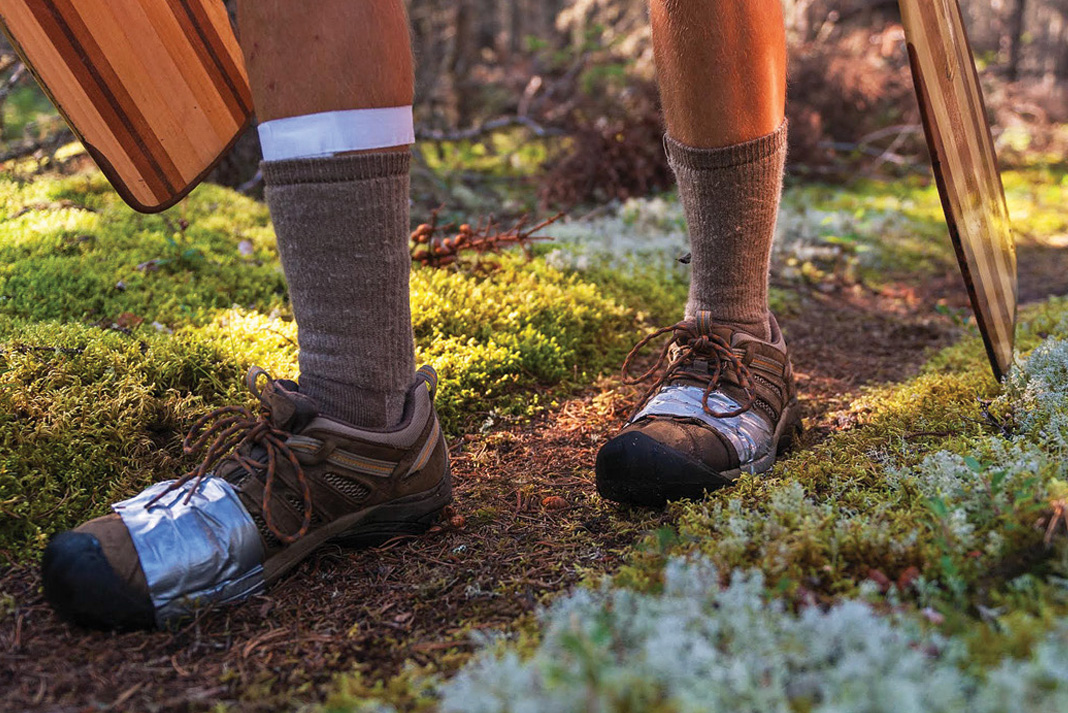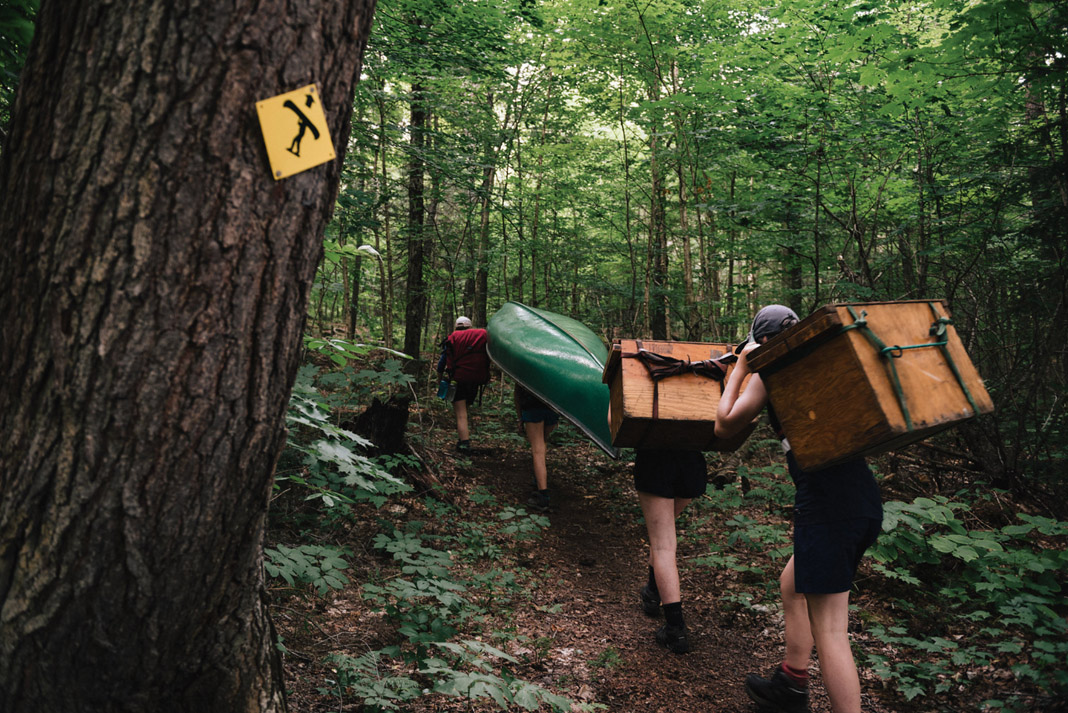A truly laborious portage isn’t characterized by steepness of grade or total length. It’s what blocks your way that defines how punishing it will be. If the portage has a sign indicating that a maintenance crew gives it a visit now and then, you can’t complain. If you need a compass to guess the line of sight and there’s only a rusty beer can or a strip of discolored flagging tape marking the starting point, then you’ve got every right to curse.
The masochist’s guide to portaging
Though I’ve had my share of nasty portages, I met my nemesis in the Diablo portage on the Steel River—a good example of a bad bushwhack. Moss, rocks, rotting logs, branches and knee-high dead trees cover the ground obscuring holes, stumps and other boot-snagging hazards.
The route becomes almost vertical at one point—I knew I’d reached this section when the bow of the canoe continuously rammed the trail in front of me. With forward motion impossible, I resorted to winching the canoe uphill by looping a rope around a tree.

Staggering down an unmarked trail, littered with giant jagged boulders and fallen trees followed. A network of well-hidden crevices only sweetened the deal. By the time the portage was complete I was relieved that the only casualty was my face—I’d kissed the earth and had the canoe come crashing down on my forehead.
Portaging will never be enjoyable; it’s the sweet moment of spotting the sparkle of shimmering water in the distance that makes the abuse we endure worth it. But these tips, earned through years of blood, sweat and a few tears, might help you grin and bear it.
6 tips for a (relatively) painless portage
1 Suit up
Forget Bermuda shorts and tank tops. Wear long layers to protect exposed skin that will otherwise be ripped apart by gnarly branches and gorged on by bloodthirsty mosquitoes. When you’re overheated and dripping, don’t curse your sweat suit, instead give thanks for your suit of invincibility.
2 Fall with dignity
Slippery rocks and exposed roots may induce unbalanced teetering, inevitably resulting in a crashing of flesh, packs, canoe and expletives. Don’t expect sympathy unless the canoe makes a bang when it hits bone. Try to channel the stoicism of Spock as you stand up, dust yourself off and carry on. A true paddler won’t judge you anyway—not unless you turtle.
3 Your canoe is a weapon
Think of your canoe as a 50-pound ram. When bushwhacking your way to the next lake with only the odd piece of flagging tape to guide you, don’t be afraid to part the vegetation with violence. If you’ve tried to slam through the overgrowth only to be thrown back by the strength of the branches, try a running start. Your trip mates will appreciate the path you create for them. (Not recommended for Kevlar models.)
4 There are no heroes
There are no extra points for making the portage in one go. However, there are demerit points if you can’t find your way back to your gear.
5 Perfect your dance
With at least one hand occupied by the canoe in the balancing act of the portage, you’re a slow-moving, non-swatting meal for hungry insect life. Incorporate a little shimmy in your step to dissuade the locals and keep them guessing.
6 Don’t look back
With an upper body carting 16 extra feet in length, there are very few situations that warrant turning around.
Kevin Callan’s Butt End column is published in each issue of Canoeroots.
“Anyone who says they like portaging is either a liar or crazy.” —Bill Mason | Feature photo: Tim Irvin





 This article was first published in the 2015 Paddling Buyer’s Guide.
This article was first published in the 2015 Paddling Buyer’s Guide. 




